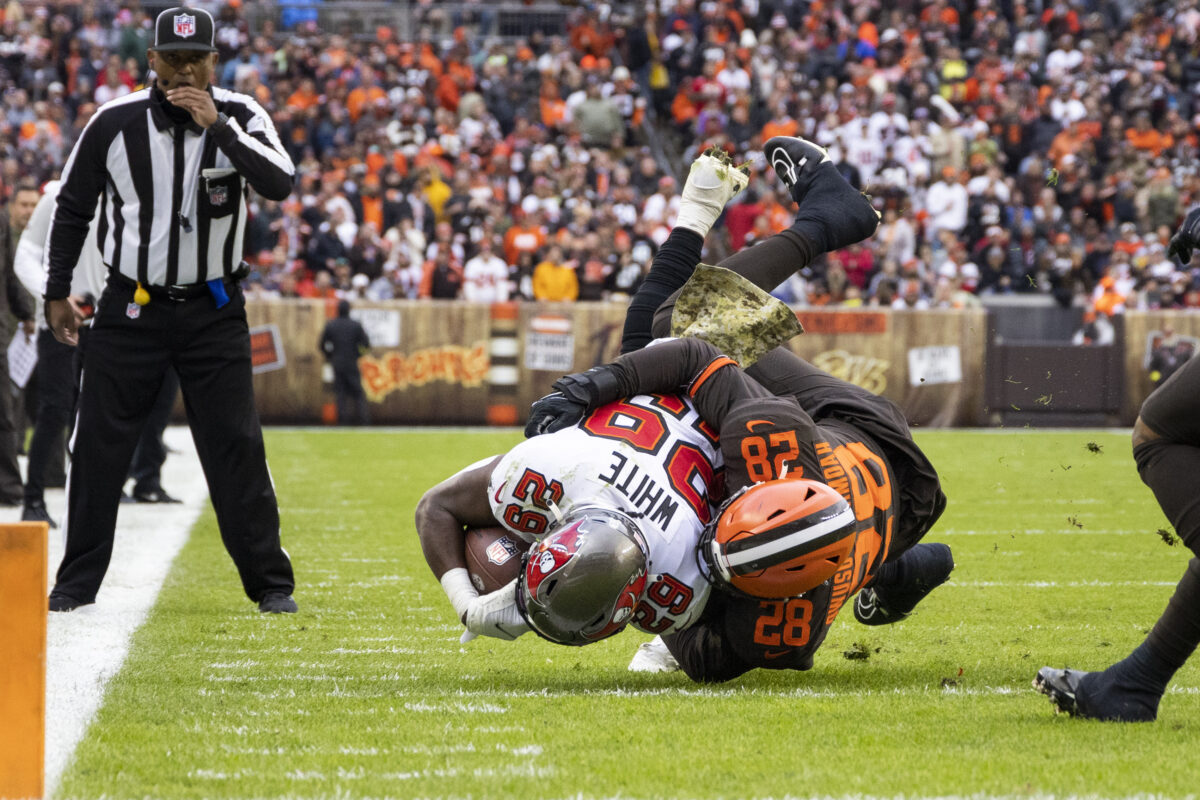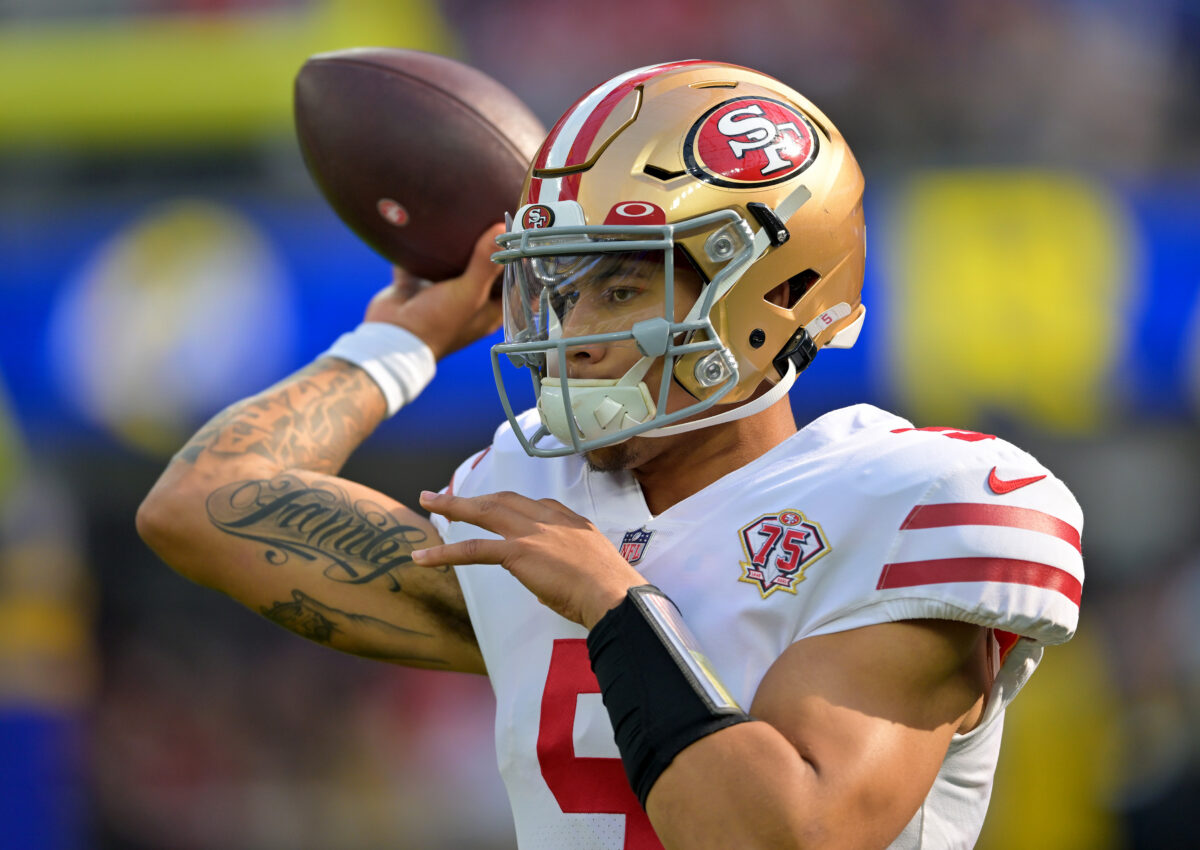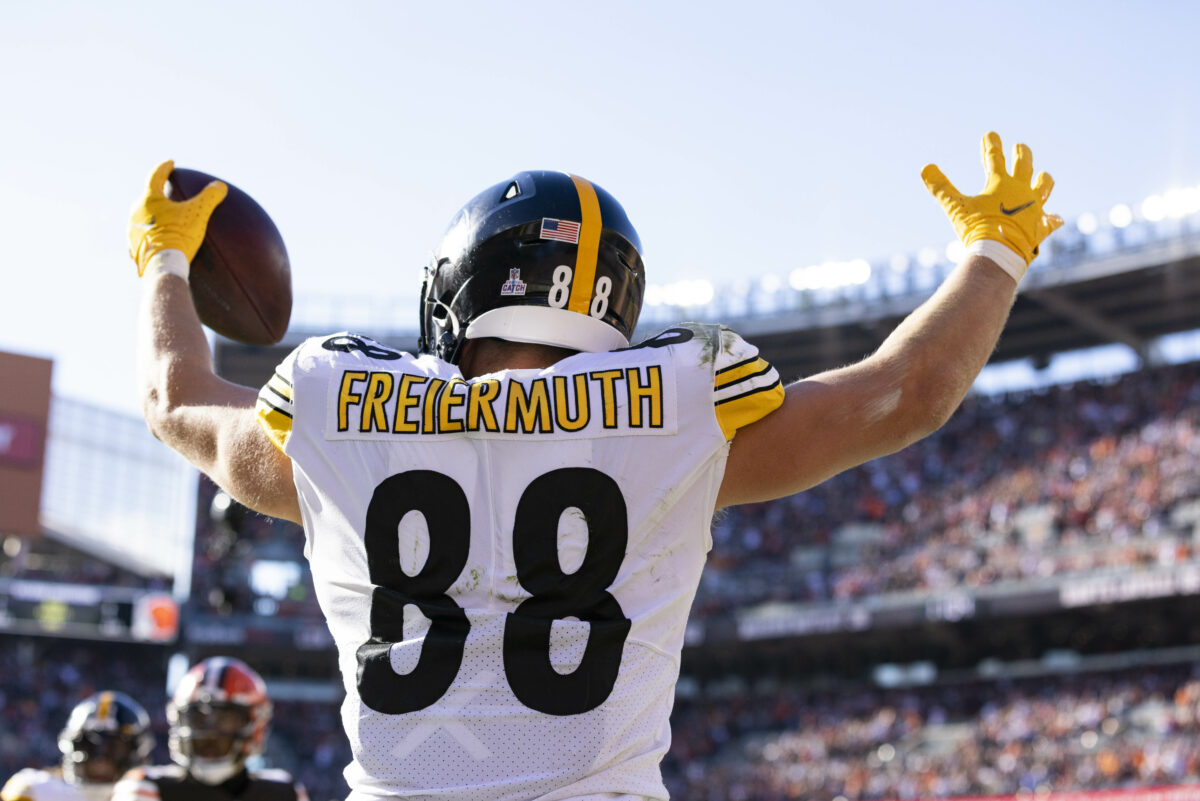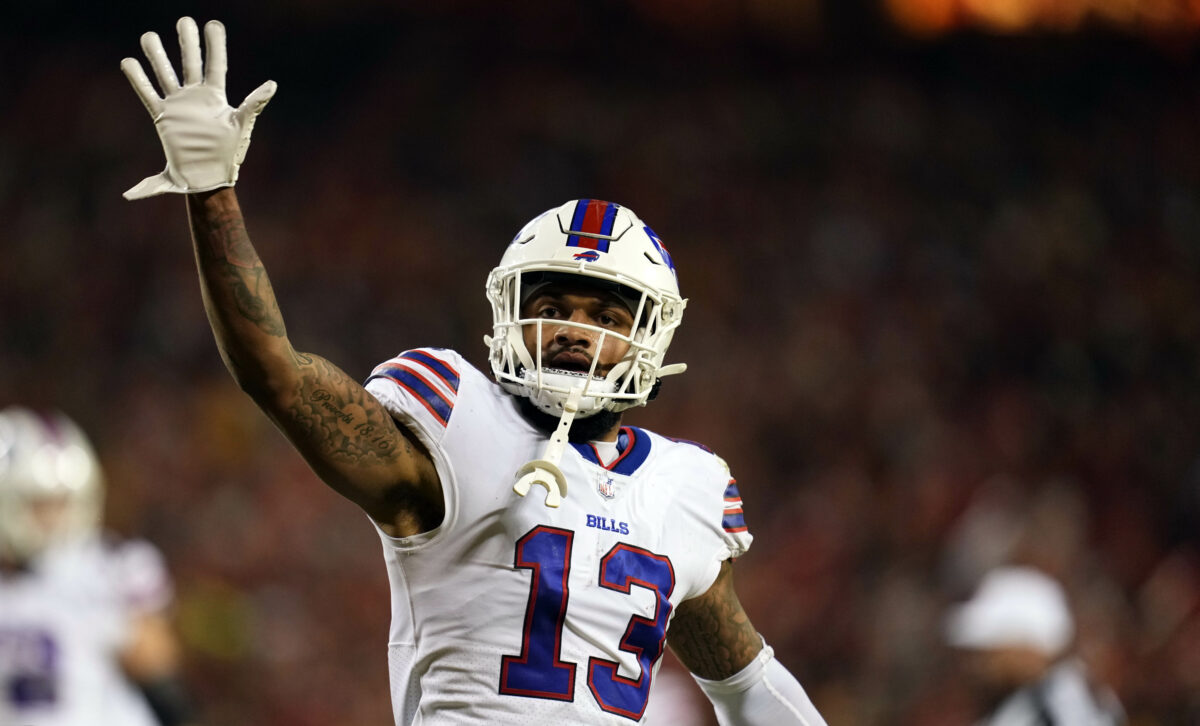The changes to NFL backfields are always more than expected and offer the best source for preseason sleeper picks and in-season waiver wire gems. Heading into 2023, it appears no less dynamic than any year and maybe full of more transitions than usual. Let’s look at each NFL team and consider if their top two running backs from last season have a chance to offer reliable fantasy points. And see where opportunities most likely lie.
Teams with new primary running back
Those ratios hold true in all years, even back when they seemed to be the only reliable players. About half of all NFL backfields feature a different highest-scoring running back each year. It may be from injury, a new free agent, a rookie back, or just a guy climbing up the depth chart from the previous season, but the change from year to year is significant and can offer immense fantasy advantage.
Each team employs several running backs and averages five different players with at least one carry. Last year, the Cowboys and Giants were at the bottom using just three rushers, but the 49ers, Broncos, and Saints went through at least seven each. Nine other teams used six different players to carry the ball. That reflects both injuries and just the natural rise and fall of players, along with the reliance on committee backfields by most teams.
The tables blow show the total yards and touchdowns for each player, along with their fantasy rank in reception-point leagues. They are the two highest-scoring running backs for the team in 2022.
Returning primary running backs
Any team could opt to make a surprise cut or trade. The internet comes alive with rumors and speculation for the next few months about even the best players – Derrick Henry to the Bills? He could be traded away from free agency next year and the Titans have a new offensive coordinator. Cam Akers may not be completely safe, and the Jets and Commanders will look to get more from their 2022 rookies of Breece Hall and Brian Robinson. But overall, these should be the more reliable situations. Until they are not.
Nine of the second-best running backs above are free agents this offseason. And when the No. 1 back misses a game, the No. 2 back has to step up.
And the above 17 teams are right around that yearly average for backfields that do not change.
Teams with potential new backfields
These 15 teams all have at least potential changes to their backfield and could be very different for 2022. Each has a unique situation that won’t be clear until after the NFL draft and June 1st cuts. If even then. I include the team rank for total PPR-fantasy points as an overall measurement of backfield effectiveness.
All the free agents are available to change teams, and the NFL draft will always produce at least four to six backs with at least minor fantasy value. These are teams to track through the spring to see where backfields end up for the preseason.
Arizona Cardinals (No. 26) – James Conner may be in his final season since there is an out in his contract for next year. Conner is a pounder and dropped from 18 touchdowns in 2021 to only eight last year. Eno Benjamin wasn’t any upgrade to the departed Chase Edmonds, and there’s speculation that the Cards could use the NFL draft to secure a faster, more dynamic runner to pair with Conner. And that could end up being a rookie good enough to take over as the primary back and allow James Conner to assume the complementary short-yardage/goal line role. There’s a new coaching staff including OC Drew Petzing, who last coached the Browns’ quarterbacks.
Baltimore Ravens (No. 29) – This is a committee backfield with a new offensive coordinator Todd Monken who last ran the offense at Georgia so running the ball will be a priority. J.K. Dobbins and Gus Edwards struggled to return from their respective ACL injuries last year and the backfield held very spotty and mostly unreliable fantasy value. Kenyan Drake was just a fill-in and is now a free agent. Both Dobbins and Edwards ran fewer than 90 times each. Dobbins and Edwards are in the final year of their contracts. Maybe Dobbins finally stays healthy and reclaims the primary role. Maybe Lamar Jackson steals all the touchdowns again. Maybe they bring in a new player with two functioning knees.
Buffalo Bills (No. 25) – Devin Singletary had never been better than the No. 20 fantasy running back playing in a prolific offense, and he’s a free agent that may not be re-signed. James Cook showed enough as a rookie to merit being the No. 1 back though there’s always an element of a committee approach and Josh Allen will steal most of the rushing scores. If Singletary moves on, the Bills will need a viable No. 2 back. Nyheim Hines was acquired last year in a trade but only played special teams which may continue. The primary rusher may be underfed in this pass-first offense, but he only needs to add a couple of catches to ensure every-week fantasy starts.
Carolina Panthers (No. 12) – Losing Christian McCaffrey obviously changed everything, and new HC Frank Reich brings his run-heavy sensibilities from the Colts. D’Onta Foreman stepped in front of Chuba Hubbard to become the new primary back to end last season. Foreman is a free agent but there is speculation that they may re-sign him after he averaged 4.5 yards per carry last year. With plenty of needs on the roster, it could make sense to rely on Foreman at least for the first season of a rebuilding offense. The Panthers will likely add a rookie or free agent back for depth, so training camp should clear up the backfield roles. Spending an early pick on a running back would devalue Foreman but could yield upside to a rookie rusher.
Chicago Bears (No. 28) – The Bears offense has sputtered plenty in the last two seasons, and the offensive line has been one of the worst for the last few years. Now David Montgomery is a free agent that may not be re-signed. This is the second season for HC Matt Eberflus’ offense and they could elect to promote up Khalil Herbert or bring in a new primary back. The early expectation is that Montgomery walks, Herbert steps up to start the year and the Bears add a Day 2 rookie or a free agent to the backfield that may compete for the primary role at least eventually.
Cincinnati Bengals (No. 10) – This could be the same returning backfield. After all, Joe Mixon was the No. 4 fantasy running back in 2021 and is signed for one more year. But he also has been oft-dinged in his six NFL seasons and there is speculation that Cincy releases him post-June 1 with a $10M saving, re-signs the capable free agent Samaje Perine and then acquires a promising Day 2 rookie running back to compete for playing time. This is another pass-first offense, but Mixon showed what a healthy primary back can do in this offense when he totaled 1,519 yards and 16 touchdowns in 2021.
Dallas Cowboys (No. 4) – The Cowboys love their running backs, maybe too much given that Ezekiel Elliott signed through 2026 with over $50 million in salary committed. But they also gave themselves an out this year where they can cut him and save a lot of money despite eating an $11.8 million dead cap hit. Or they can redo his contract and bring him back at a reduced price which is possible and most likely. Tony Pollard finished his rookie contract on a high note and will upgrade the $1.1 million he made last year. They could end up with Elliott and Pollard again. They could end up with Elliott and a rookie back like Bijan Robinson as the next potential Emmitt/Ezekiel. Whatever they do, there will be significant fantasy value attached.
Denver Broncos (No. 14) – Last year was a complete face-plant for the Broncos offense that lost the promising Javonte Williams to a torn ACL, dumped Melvin Gordon, acquired Chase Edmonds, who injured his ankle and landed on injured reserve and will likely be a cap casualty since it would save $5.9 million in cap space for the strapped Broncos. They ended up with Latavius Murray as the best available and Murray has history with new HC Sean Payton though he’s slated to be a free agent along with Marlon Mack and Mike Boone. There’s conjecture that Williams may not be ready by Week 1, which further complicates the picture. The 33-year-old Murray is not the long-term answer to be sure, so it all depends on how quickly and how well Williams recovers as to whether they stand pat with Murray as the fill-in, upgrade the No. 2 back in free agency, or mine the draft for a quality back to help out.
Detroit Lions (No. 2) – It doesn’t hurt that the Lions spent big on offensive linemen and have reaped the benefits of one of the elite units. Still, they cannot keep D’Andre Swift on the field and healthy. He enters the final year of his rookie contract and the expectation is that the Lions will let him walk in 2024 but he’s cheap enough to keep for this season. Jamaal Williams was the one with a magic year when he led the NFL with 17 rushing touchdowns and he hits free agency. Williams is key, but Swift remains for one more season to cloud the picture.
Kansas City Chiefs (No. 5) – The Chiefs’ backfield started out trying to get the former first-round pick Clyde Edwards-Helaire on track for the third season and ended with training camp hype monster Isiah Pacheco wresting away the primary rushing job. Jerick McKinnon finished 2021 on a hot streak in the playoffs that didn’t continue – at least not until Week 12 when he became a scoring machine and then all but disappeared in the playoffs. The Chiefs are expected to decline CEH’s fifth-year option so he’s in his final year. Pacheco should return as the $870K primary rusher, but the 30-year-old McKinnon is a free agent. The Chiefs may re-sign him or look elsewhere for a younger option that could step up more in 2024 when CEH is gone.
Las Vegas Raiders (No. 8) – That was a masterful piece of timing by Josh Jacobs who was denied a fifth-year option, “oops,” and ended his rookie contract as the No. 1 fantasy running back. All that in an offense thought to use a committee that wouldn’t be a great fit for him. Zamir White was a fourth-round pick that only rushed 17 times all year. There is no one else behind him with any experience or expectation, but Jacobs will command whatever the top of the mark is for running backs. He’s likely looking at a franchise tag that he may, or may not, play under. Maybe 2022 was just a magic year for Jacobs, but he wisely cashes in on the situation.
Miami Dolphins (No. 19) – The Dolphins enter 2023 with the entire backfield entering free agency – Raheem Mostert, Jeff Wilson, Myles Gaskin, and Salvon Ahmed. The 31-year-old Mostert was the top producer but he and everyone else was injured at some point, and the committee approach further drained potential from the crew. With a decent offensive line, a fearsome pass game, and a glaring need for a young and talented back to show up, the Fins’ foray into free agency and the NFL draft is worth tracking. There’s no reason to bring back the “49ers-East” backfield again this year.
New York Giants (No. 16) – Saquon Barkley was another back with nice timing when he turned in a No. 4 fantasy performance in his final contract year. The Giants aim to re-sign him and he will not be happy if they slap the franchise tag on him. The Giants have to keep him or entirely start over in their otherwise talent-starved backfield. Matt Breida is also a free agent but is no priority to re-sign. HC Brian Daboll’s first season was a rousing success, but the offense must have Barkley to at least match last year, let alone improve.
Philadelphia Eagles (No. 23) – The Eagles’ committee approach to their running backs already limits the primary back, and Miles Sanders emerged as their top option last year with 259 carries for 1,269 yards. But the Eagles are not expected to re-sign him and 27-year-old Boston Scott also becomes a free agent. That leaves Kenneth Gainwell apparently most likely to become the lead back despite never rushing more than 68 times in either previous season. The Eagles are another team rumored to consider taking the Bijan Robinson plunge, and they are a lock to upgrade their backfield if Sanders ends up gone. Between the passing and rushing of Jalen Hurts, it would be hard for any back to do much more than Sanders recently did. But that Philly offensive line is a significant advantage to anyone carrying the ball.
Tampa Bay Buccaneers (No. 13) – The Buccaneers are expected to part ways with Leonard Fournette and promote Rachaad White in his second season to become the primary runner. Ke’Shawn Vaughn hasn’t panned out in his three seasons, so the Buccaneers will be looking to at least upgrade the primary backup to White, if not a player that also adds weekly value to the rushing effort. The Bucs brought in new OC Dave Canales from the Seahawks to install a better run game which bodes well for White but also boosts the potential value of whichever back ends up as the No. 2.
Running backs have been devalued in the NFL and with good reason given their injury and burnout rate. This year’s draft is considered to be a deep one for running backs, and Day 2 and Day 3 picks can still offer value as a plug-in replacement or eventual starter. That means that any team can access a quality rookie back for depth – or more.












